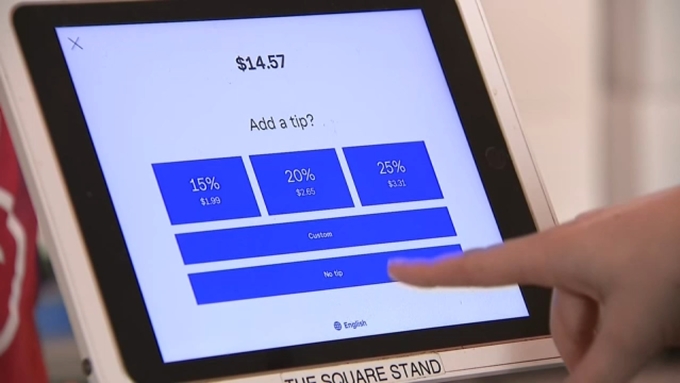It's not just wait staff that Americans today feel pressured to tip barbers, delivery drivers, drivers, and self-service kiosks.
Nearly three-quarters of Americans surveyed said they tip restaurant servers, according to a June poll by international data analytics firm YouGov. The rate for bar servers was closer to 50%, and for taxi drivers and hotel staff around 40%.
However, 42% of US respondents admitted that they sometimes or often tip even when the service is bad, suggesting that for some people, tipping is not about service quality.
According to Forbes , Americans are among the biggest tippers in the world . The standard is that each person should tip about 15-20% of the bill. Most people in the service industry are paid less than minimum wage and workers rely heavily on tips for their income.
Since the pandemic, Americans have been talking about “tip inflation.” This is a term that describes the expansion of tipping culture to more industries in the United States, as opposed to the tradition of tipping only being prevalent in full-service restaurants. The origin of tip inflation can be traced back to the pandemic and the increased inflation that began in 2021. Since then, American consumers have been outraged about their famous tipping culture.
Tipping is now a common practice in restaurants, shops, supermarkets, cafes, and airports, and is now a common practice in many other service establishments. Touchscreen digital payment systems run by companies like Clover and Square already display tipping prompts to employees by default. Customers are required to choose a tip percentage when using products and services, which can sometimes exceed 30% of the bill.
Customers are also encouraged to tip when ordering online and at kiosks. According to data analysis from Square, nearly 75% of remote food and beverage transactions prompt the buyer to leave a tip.
A report from personal finance platform NerdWallet found that many people are feeling pressure to tip more amid a growing number of automatic tip prompts on kiosks and self-service apps. According to payroll software provider Gusto, non-restaurant, leisure and hospitality workers — who traditionally did not collect tips — earned an average of $1.25 per hour in tips in June, up 30% from four years ago.

Tipping reminders are displayed by default on checkout screens. Photo: ABC7 Chicago
Tipping is so ingrained in American culture that customers feel “obligated” to tip, even when service is poor or labor-intensive. This creates an expectation of a tip, regardless of the quality of service. In many parts of the US, the minimum wage for workers is lower than the standard minimum wage. This means that companies can legally pay their employees less and rely on tips to make up the difference.
As a result, workers rely heavily on tips to earn a living wage. This can leave workers in a passive, unpredictable position with no monthly income. This can create financial anxiety and job insecurity.
Meanwhile, tip inflation has many benefits for businesses. Relying on tips can reduce labor costs because tips from customers offset the low wages that businesses pay their workers. This can be especially attractive for businesses with low profit margins.
About two-thirds of American adults have negative views about tipping, according to a survey by personal finance platform Bankrate. They believe businesses should pay their employees better wages instead of relying so heavily on tips. They’re upset about the tip prompt appearing on checkout screens, feel like tipping culture is out of control, and would be willing to pay higher prices if we could eliminate tipping.
Xiao Gu (according to CNBC , Forbes )
Source link

























![[Photo] National Assembly Chairman attends the seminar "Building and operating an international financial center and recommendations for Vietnam"](https://vphoto.vietnam.vn/thumb/1200x675/vietnam/resource/IMAGE/2025/7/28/76393436936e457db31ec84433289f72)











































































Comment (0)